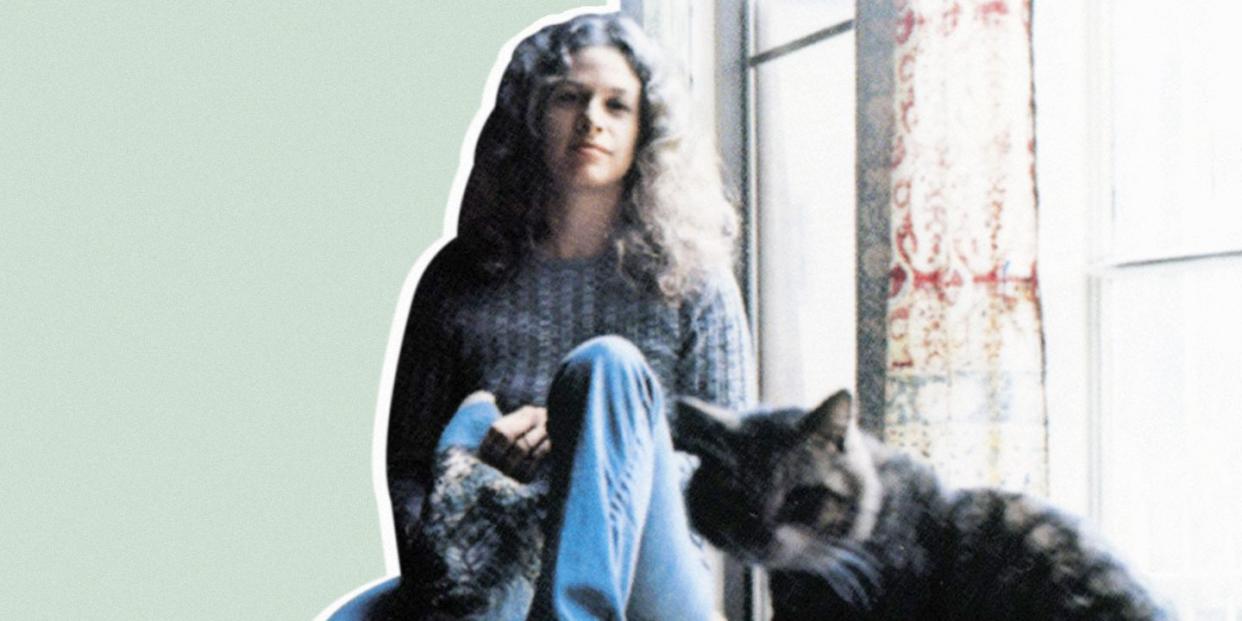I Always Have Carole King's 'Tapestry' With Me. We All Do.

- Oops!Something went wrong.Please try again later.
My copy of Carole King's Tapestry is worn at the corners. The cardboard has been pulled back a bit, and the once-white interior of its edges is browned and tattered. It was that way well before it landed in my hands. I found it at a record store in Knoxville, shelved away in a box of vinyl donations, and I've carried it from city to city with me, even when I didn't have a record player to play it on. Though I'm sure it's not, I like to imagine it's an original copy—one released in 1971.
On February 10, the album hits its 50th anniversary. As time goes on, plenty of albums will reach that half-century mark, but few will age into the category Tapestry has. King's songs have become universal standards that span decades, generations, and genres. Her writing is a benchmark for artists. The reason I keep Tapestry around is because it's an inspiration of what creativity can do. It is one of the few albums whose greatness extends prior and far beyond its original release. What King created is the mountaintop: a portrait of a songwriter's past, present, and future.
Tapestry's legacy started a full decade before the album was released. At the time, King was penning hits for other musicians alongside her then-husband, Gerry Goffin. In the '60s, the duo provided "Natural Woman" to Aretha Franklin and "Will You Still Love Me Tomorrow?" to The Shirelles—both landed in the top 10 on Billboard's Hot 100 chart.
A decade later, James Taylor and Joni Mitchell insisted King head into the studio to record her own music. The result was a critical and commercial success. With Tapestry, King's second album, she became the first woman to win multiple Grammys in its main general categories—taking home Album Of The Year, Record Of The Year for "It's Too Late" and Song Of The Year for "You've Got A Friend." The album spent 15 consecutive weeks at number one on the Billboard 200—an achievement no woman would replicate until Whitney Houston, two decades later. Tapestry is regarded as a great American classic, landing at No. 25 on Rolling Stone's list of greatest albums of all time.
Even in re-recording of hits made famous by Aretha and the Shirelles, it's King's slowed down tempering that made them feel new all over again. It also informed the way they'd be performed moving forward. The stripped down nature of Tapestry is as much a canvas as it is an instruction manual. Contemporaries and future generations took note of that.
The influence is massive: Taylor went on to make "You've Got a Friend" a signature entry in his songbook. Barbra Streisand covered "Beautiful" to critical acclaim. That same track would inspire a whole musical based on King's life in the 2000s. Franklin, a diva whose public appearances became fewer and farther between, appeared at King's Kennedy Center Honors to perform "Natural Woman" for her. Reba McEntire covered "So Far Away" as an ode to the singer. "Where You Lead" was co-opted for an anthem for Gilmore Girls fans. Even with its massive success under The Shirelles, it was King's version of "Will You Still Love Me Tomorrow?" that inspired Amy Winehouse's recording years later. The list is ongoing. Even beyond its musical nature, the lyrics beg more of writing—in listening to "Home Again" earlier today, I registered the line, "Snow is cold, rain is wet, chills my soul right to the marrow." Like her metaphor, the ingenuity does not stop at the bone. It cares enough to cut deeper.
Tapestry is the enduring example of how art can transcend generations—an album that is woven into our cultural fabric, and influences all the musicians who came afterward.
It's the reason I keep Tapestry near. Tapestry is a reminder that if we find the right words, the right metaphors, the right melodies, we can create something that helps us communicate what it is to be human. It can permeate culture. People reuse it, knowing there's no better way to communicate what's in their hearts.
And perhaps someday, someone will hold that creation in their hands, tattered and browned, and consider what it means to make something truly remarkable.
You Might Also Like

